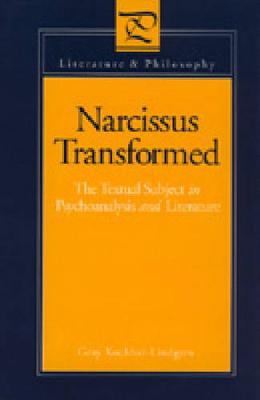Literature & Philosophy
1 total work
In Narcissus Transformed, Gray Kochhar-Lindgren interprets Narcissus as thematizing the tragic situation of the postmodern subject. After showing the connections between Cartesian philosophy and narcissism, he proceeds to lay out the function of Narcissus as a poetic figure of discourse in the fields of psychoanalysis and modern fiction. He moves beyond the description of narcissism to an interpretation of the conditions necessary for Narcissus, the beautiful boy captivated by his own image, to become a different kind of subject. The topos of narcissism, which is first articulated by Ovid, always includes within itself a mirror, a gap, self-referential desire, and death all of which culminate in Narcissus's inability to make space for an Other. Kochhar-Lindgren contends that this is the founding topos of modern philosophy, which is then incorporated into and transmuted by the disciplines of psychoanalysis and fiction. With the extensive work of Freud on narcissism, it becomes a central concept for psychoanalysis; and with Lacan's interpretation of the narcissist as phantom, statue, and automaton, narcissism moves into a specifically textual interpretation of subjectivity.Kochhar-Lindgren then provides close readings of fictional texts- The Waves by Virginia Woolf, The Ogre by Michel Tournier, and Daniel Martin by John Fowles to show more explicitly the textual construction of the narcissistic subject and to suggest ways that Narcissus might be transformed into a subject not held in thrall to the "glassy-eyed stare of Thanatos." He concludes with an enactment, from a Lacanian and fictional perspective, of the beginnings of the undoing of the narcissistic topos of contemporary culture. Narcissus steps from the self-reflective mirror into a theater; he stops longing to be a purely self-reflexive work in order to become part of the play of a text."
